Congregation in the Wilderness
Kadesh Barnea -
a Place of
Stagnancy
The Congregation of Israel stayed in the Wilderness of Sinai for a year
and moved on to Kadesh Barnea
in the Wilderness of Paran which is on the border of
the Promised Land (Num. 10:11-13; 34:4).
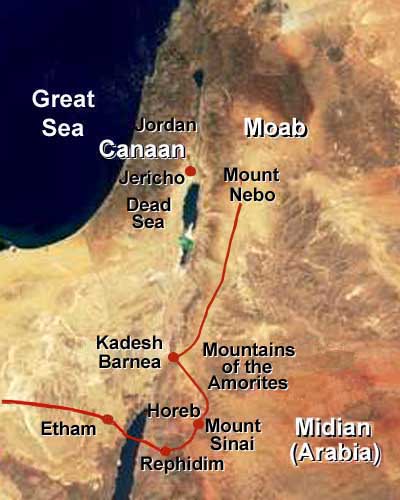 It is important
for us to locate Kadesh Barnea. “So we departed from Horeb,
and went through all that great and terrible
wilderness which you saw on the way to the mountains of the Amorites, as the
LORD our God had commanded us. Then we
came to Kadesh Barnea. And I said to you, ‘You have come to the
mountains of the Amorites, which the LORD our God is giving us.” (Deut. 1:19-20) The
land of the Amorites extends from east of the
It is important
for us to locate Kadesh Barnea. “So we departed from Horeb,
and went through all that great and terrible
wilderness which you saw on the way to the mountains of the Amorites, as the
LORD our God had commanded us. Then we
came to Kadesh Barnea. And I said to you, ‘You have come to the
mountains of the Amorites, which the LORD our God is giving us.” (Deut. 1:19-20) The
land of the Amorites extends from east of the
“It is eleven days’ journey from Horeb by way of
Good and Bad Things happened at Kadesh Barnea
· The people longed for the food in
· Aaron and Miriam rebelled against Moses’ authority and Miriam was
stricken with leprosy as punishment (Num. 12:1-16).
· Twelve spies were sent out from Kadesh-Barnea.
They were gone for 40 days. They brought back a report that
· The Congregation of
· Korah led a group rebellion
against Moses and Aaron. God caused the
earth to open up and buried the rebels alive, and also many others were killed
by a plague (Num. 16:1-50).
· Miriam died and was buried in Kadesh.
· There was no water and the people contended
with Moses. “Then the LORD spoke to Moses, saying, ‘Take
the rod; you and your brother Aaron gather the assembly together. Speak to the rock before their eyes, and it
will yield its water; thus you shall bring water for them out of the rock, and
give drink to the congregation and their animals.” (Num. 20:7-8)
Moses
did not follow God’s instructions to speak to the rock. “Then Moses lifted his hand and struck the rock twice with
his rod; and water came out abundantly, and the congregation and their animals
drank. Then the LORD spoke to Moses and
Aaron, ‘Because you did not believe Me, to hallow Me
in the eyes of the children of
· Moses twice requested passage to the Promised Land going through the territory of Edom but was denied access on both occasions (Num. 20:14-21).
The Congregation's Journey was again Impeded
· “Then the Children of Israel, the whole congregation journeyed from Kadesh and came to Mount Hor," and it was there that Aaron died and was buried. (Num. 20:22-29)
· “And the people spoke
against God and against Moses, . . . . So the LORD
sent fiery serpents among the people, and they bit the people; and many of the
people of
The “bronze serpent” symbolizes the crucifixion of the sin-bearer who is the
Savior Jesus Christ (Jn. 3:14-15; 2 Cor. 5:21; Jn. 8:28; 12:32-34)
· “Then Israel remained in Acacia Grove, and the people began to commit harlotry with the women of Moab. They invited the people to the sacrifices of their gods, and the people ate and bowed down to their gods." (Num. 25:1-2) God was very angry with Israel and commanded those guilty of harlotry and adultery to be slain. "And those who died in the plague were twenty four thousand. (Num. 25:3-15).
When the Children of
Moses
saw the
Promised Land but could not
enter it
Moses is one of the
greatest prophets, leaders and teachers that
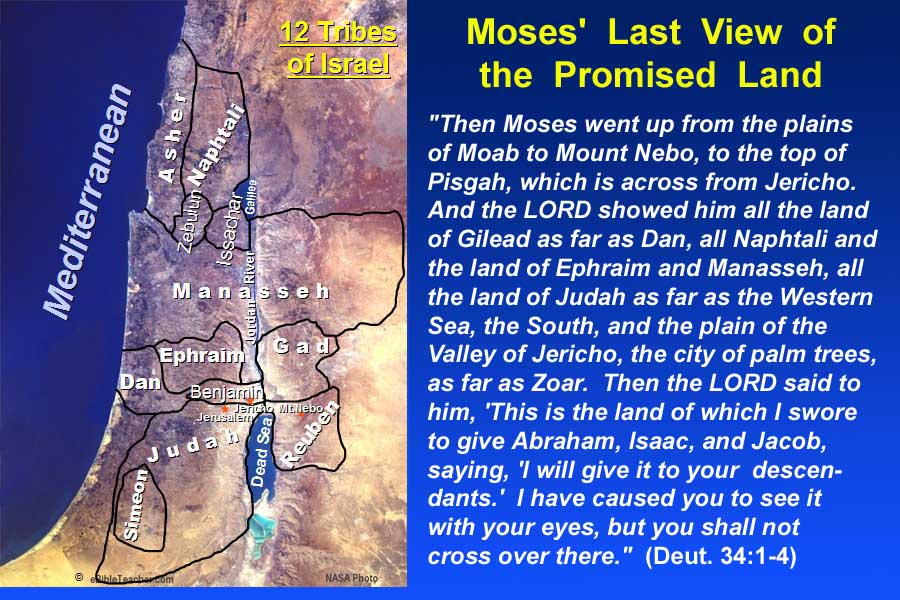
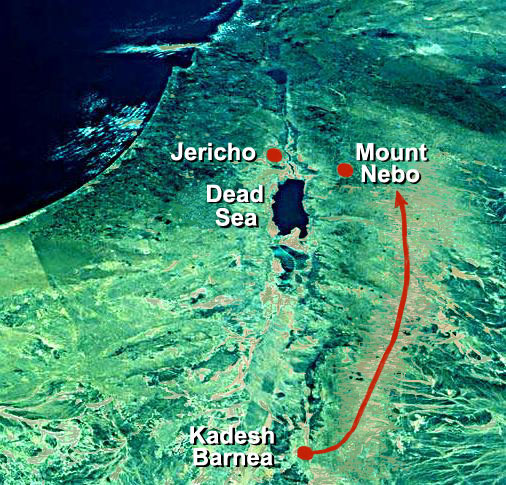 The satellite photograph on the right shows the terrain of present-day Israel and Jordan. A mountain range divides the two countries. The Children of Israel journeyed north from Kadesh Barnea towards Mount Nebo.
The satellite photograph on the right shows the terrain of present-day Israel and Jordan. A mountain range divides the two countries. The Children of Israel journeyed north from Kadesh Barnea towards Mount Nebo.
The territory where Israel had been wandering for many years had very hostile environment. The land is not only arid and parched but there were also enemies to fight. Living condition was difficult. On the western side of the mountain range is "a land which flows with milk and honey" (Num. 14:8).
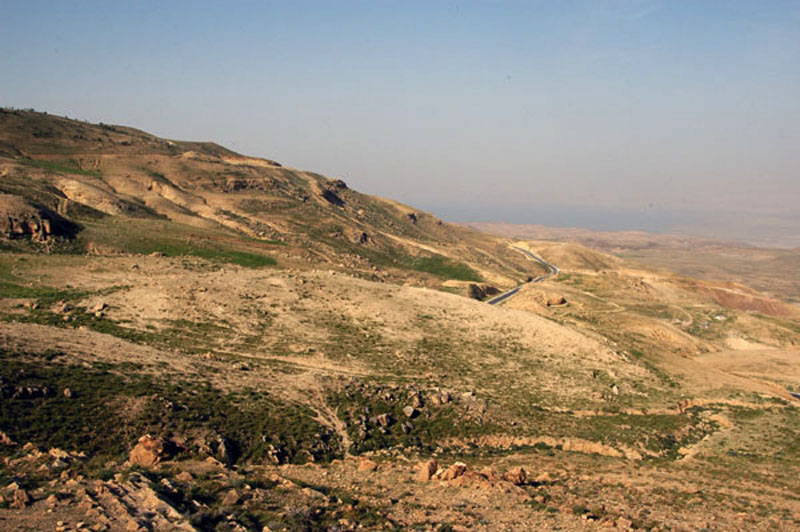
This photograph is taken from the eastern side of the mountain range (Jordanian side). Mount Nebo is the highest point on this mountain. There is not much vegetation on this side of the mountain slope. Moses must have climbed up these slopes to Mount Nebo to have his first and last view of the Promised Land before he died.
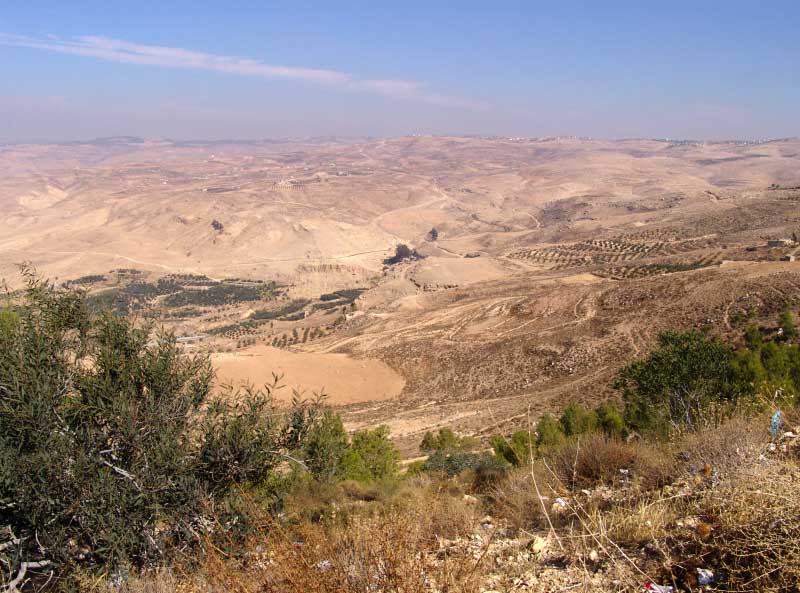
This photograph is taken on top of Mount Nebo facing east towards present-day Jordan. It shows the wilderness land that Moses and the Children of Israel have been wandering and struggling for many years. They must have felt glad to leave this land and enter the Promised Land on the other side of the mountain range.
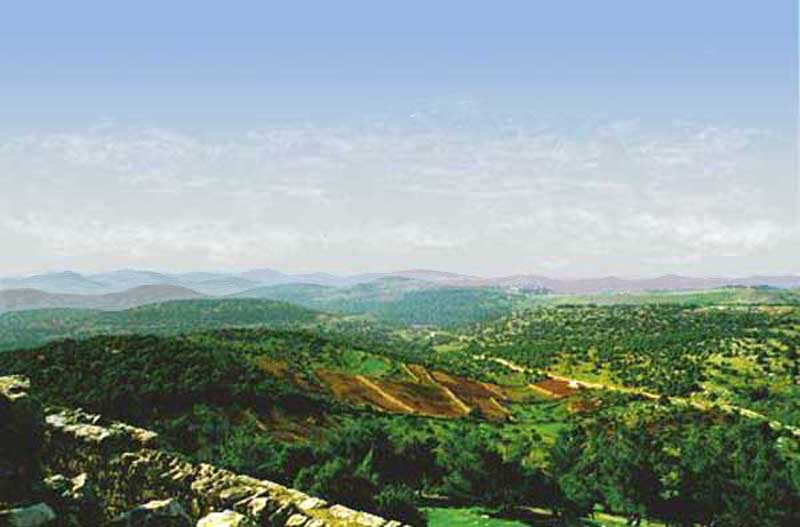
This spectacular view of the Promised Land "which flows with milk and honey" is what Moses must have seen before his departure from this earth. What a great contrast to the land on the other side of the mountain range. This photograph is taken from the viewing terrace of the Memorial Church of Moses. This site has been a place of Christian pilgrimage for centuries.
Conclusion of the Congregation in the Wilderness
n
Place all your faith and trust in the Lord Jesus
Christ. n
Keep God’s Commandments. n
Be obedient and patient.
Do not complain or get angry. n
The earth that we live is only a
temporary place. n
God has prepared for us a very beautiful place in Heaven. May God bless you A sermon based on this article was preached by Paul Wong to a
Congregation in 


|
Paul Wong is a Christian minister and the
President of ARK International. |
 |
|


